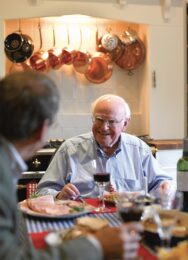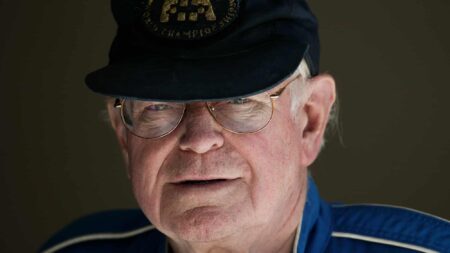Sid Watkins left the army medical services in 1956, already a qualified doctor, and as he had an interest in motorsport and club activities like rallies and things, he joined the RAC medical list and was soon helping at race meetings in his role of doctor. After several years in the United States as a specialist in Neurosurgery he eventually got the top job as Professor of Neurosurgery at The London Hospital and in 1978 when Ecclestone approached him to take over the post of FOCA doctor he was well prepared for the job. Not only was he well versed in motor racing both in England and America but he had many years of acting as race-doctor behind him and was neurosurgical adviser to the RAC Motorsport Panel. He had what amounted to a medical passport to most countries and knew his way about the world of medicine on both sides of the Atlantic Ocean. No matter where a race was being held, Professor Watkins would have some personal contact with the local medical world. All he required Ecclestone to do was to ratify his position with the FISA and with the race organisers, which was done.
What it means now is that all the Formula One teams know “the Prof.” and he knows all the race organisers and their medical services, so he is the perfect “go between”. He arrives at a Grand Prix well before the first practice and together with the local medical organisation reviews the facilities and cross-checks that everything required by FISA rules for a World Championship event are in order. At some races the first practice session has been late in starting because “Prof.” will not give his sanction until everything is in order. There have been times when the organisers have said the mandatory medical helicopter would be at the circuit by 9.30 a.m. and it has been late in arriving. Not until it is in place and deemed suitable by Sid Watkins will he let practice commence, as far as his side of things are concerned. At one race the medical helicopter was units way when it had to divert to a serious road accident, so practice was delayed until a back-up helicopter was dispatched. When it arrived Professor Watkins was not satisfied with its suitability and made it clear to all the teams that if they wanted to start practice they should know that the helicopter was not really suitable for the job and was only temporary. The right one arrived soon after practice got under way and it was the “Prof.” who looked after all this side of activity. Facilities around the circuit are looked at the day before practice and checked on the morning of each day and a Doctor’s course car and driver are supplied for the purpose. At the start of each race he follows the first lap to be with the action.
Sid Watkins is a great believer in moderation at all times in all things, and enjoys a cigar and a dram of whisky
If all is in order and nothing goes wrong Professor Watkins hopes he has no more to do, but nonetheless he is always on duty and is situated by the race control with his course-car close by and “at the ready”. Only if an accident is a bad one or there is an emergency does the Doctor’s car go out on the track. If the circuit doctors and first-aid posts around the circuit are able to cope with a situation he stays put, so that the severity of an accident can be gauged from whether Prof. Watkins goes off in the Medical course car or not. His drivers vary from solid professionals like Herbert Linge, mentioned in an earlier article in this series, to local “hot-shoes” who happen to be a friend of the Club President or something. There have been occasions when Sid has requested a more responsible driver, not wishing to end up in hospital himself! He does not need a driver who is out to break the lap record every time he goes out. Quite often it will be an ex-Formula One driver or a Formula Two driver on holiday and it is a good thing if the driver knows the circuit well. The medical car varies from the superbly equipped Porsche 928 of the German ONS, to the latest “trick” car loaned to the race organisers, such as the Lamborghini Countach at Monaco, or the BMW M1 coupé in Austria. For preference Sid Watkins is more than satisfied with the ONS Porsche 928 and makes no secret of the fact that of all the drivers he has to work with he rates Herbert Linge and Phil Hill the best.
Professor Watkins is a mild and pleasant man in his fifties, married with a family, and is a realist about motor racing. Like me, he accepts the “law of averages” and knows that you cannot make such an unnatural activity as Grand Prix racing 100% safe, but you can be prepared to the utmost for the time when it proves to be unsafe. We agree that you cannot possibly get through a series of seventeen races at the tempo of today’s racing without some accidents and that, generally, each year there has got to be a big one. You must always be ready for the bad accident being today and anyone who thinks accidents are not going to happen is being unrealistic. At the Italian Grand Prix at Monza last year Professor Watkins mentioned to me that he was worried for we had got to September in the 1981 season without a really serious accident. The “law of averages” said we were overdue for one. When he saw John Watson’s accident after the race on the closed-circuit television at race-control, he said he was sure “this had been it”. Mercifully, “Wattle escaped uninjured but it was an anxious moment and the course car did not have to go.


